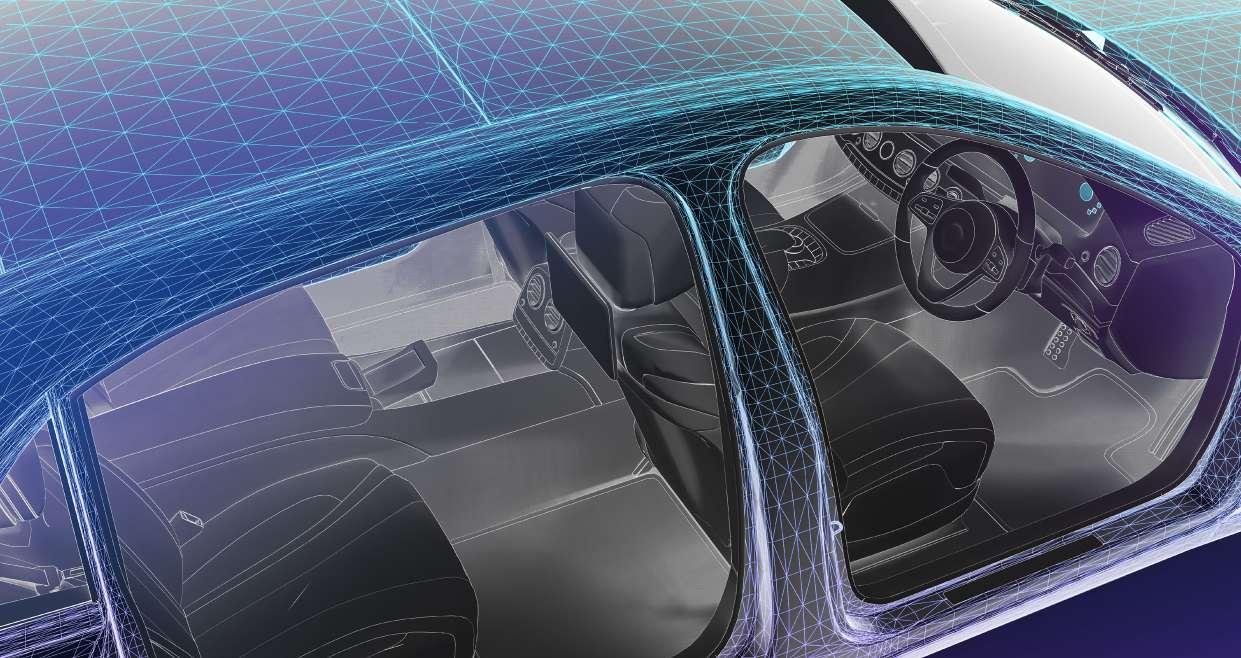
3 minute read
New upside and business potential for automakers through the SDV transformation
OEMs and suppliers have a unique opportunity to create value with SDVs, particularly through add-on features during vehicle lifetimes, new digital services, and deeper customer engagement in their digital ecosystem. The most successful companies will likely achieve significantly higher valuation levels by being more attractive to investors.
OEMs and suppliers unlock new software and service incomes through SDVs, enabling more scalable and recurring revenues
A key factor in an OEM’s SDV effort is the potential service revenue it can generate from its vehicles in the future. The latest EY studies for SDVs forecast revenues of over €100 billion by 20302. However, at present many content-related services are being monetized in the mobile ecosystem with its app stores and payment infrastructures. In addition, there are currently no proven business models for monetizing in-vehicle services — this deters third-party service providers. One possible path for OEMs is to identify the high-value services and develop and offer them as the core of their service ecosystem.
Beyond that, OEMs need to facilitate the development of services by third parties, focusing on their in-vehicle infotainment (IVI) operating system. This means they need to create the best conditions for service development (e.g., through a full CI/CD setup, seamless integration of existing best practices) and, most importantly, offer strong monetization incentives.
Ultimately, OEMs need to differentiate the vehicle-centric SW ecosystem from established mobile offerings. A common tenor in the market is that an SDV functions more like a home than a smartphone, which also makes it substantially different from the mobile ecosystem. Crucially, to deliver a home-like experience, SDVs need to integrate a range of technology ecosystems (deeply embedded functions, mobility-specific content, entertainment and gaming, social networking, etc.).
Through an immersive in-vehicle digital service ecosystem, OEMs in particular gain deeper customer lock-in and increased customer lifetime value
A key imperative for OEMs is to move away from the car as the sole sales activity and focus on recurring service revenue throughout the lifecycle of the car. The transition to SDVs is paving the way for this. Through a rich ecosystem of digital services, OEMs can increase customer engagement as the vehicle becomes the heart of user interaction, enabling an immersive customer experience. To make that happen, OEMs need to level up and establish the vehicle as a ‘third living space’, in which users interact on a massive scale. Currently, the interactions that generate relevant data do not take place via the vehicle user interface, but largely via the smartphone. Consequently, they are not accessible for OEMs to improve their services.
In addition, users are already deeply integrated into competing technology ecosystems, making it difficult to shift to a vehicle-centric ecosystem. To tap the potential here, OEMs must ensure that the necessary services are available in a native form for the vehicles and integrate seamlessly into the vehicle’s user interface and overall user experience. To achieve this, many OEMs are opening-up their user interfaces to tech players, bringing in their IVI platform and app ecosystem, or driving their app ecosystems through dedicated third-party programs. Ultimately, whoever knows the users and their preferences best and whoever can translate this knowledge into user-centric experiences and services will win the race for screen time in the car and therefore create recurring revenue.
Lower scaling costs and recurring revenues make OEMs more attractive to investors, increasing valuations and facilitating access to capital
With the transition to SDVs, OEMs are perceived more as software companies for which tech-like growth rates are expected. From an investor’s point of view, the shift to SDVs and the associated digital services business with low scaling costs is an extremely interesting growth opportunity. This is important for OEMs, as higher valuation improves access to capital, thus helping to fund technological transformation in EVs, AD, chips, SDVs, etc., and thereby fostering innovation and competitiveness. Looking at current OEM market cap growth, it appears that aside from Tesla (74% CAGR of market cap) and BYD (23% CAGR of market cap), the software revolution has yet to translate into improved capital access for traditional OEMs (CAGR of market cap mostly amounts to 3-7%)3
As a result, investors don’t yet see expanded growth opportunities among traditional OEMs and are reluctant to make large scale capital commitments. To be considered a software company, OEMs must master both dimensions of the SDV value pyramid, i.e., they must offer digital services that show growth while reducing the cost and complexity of software development. This process can be embedded in a more tech-oriented investor story that focuses, for example, on reporting revenue and growth from digital services, the number of developers involved, passenger screen time in the vehicle and third-party purchases enabled.




